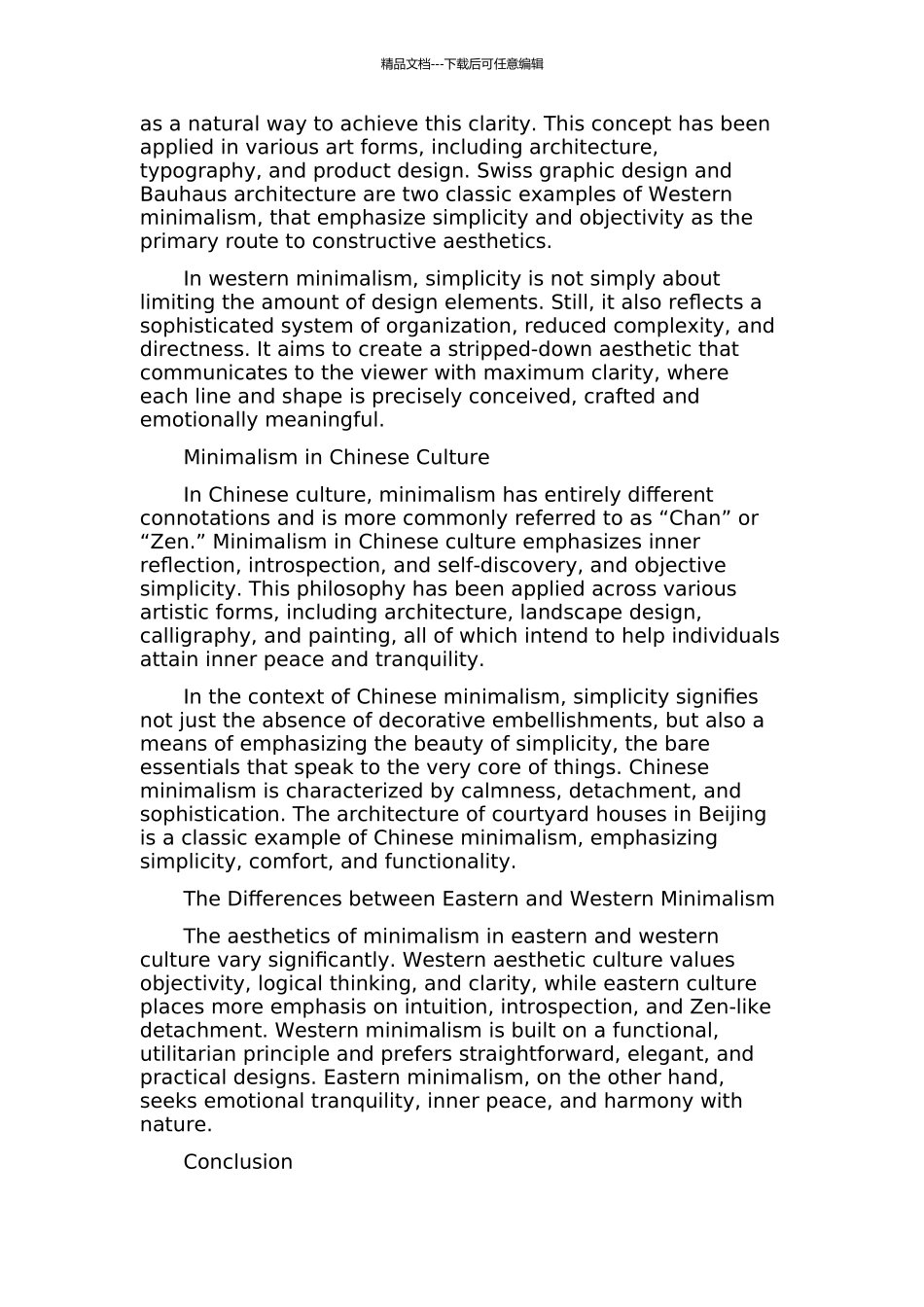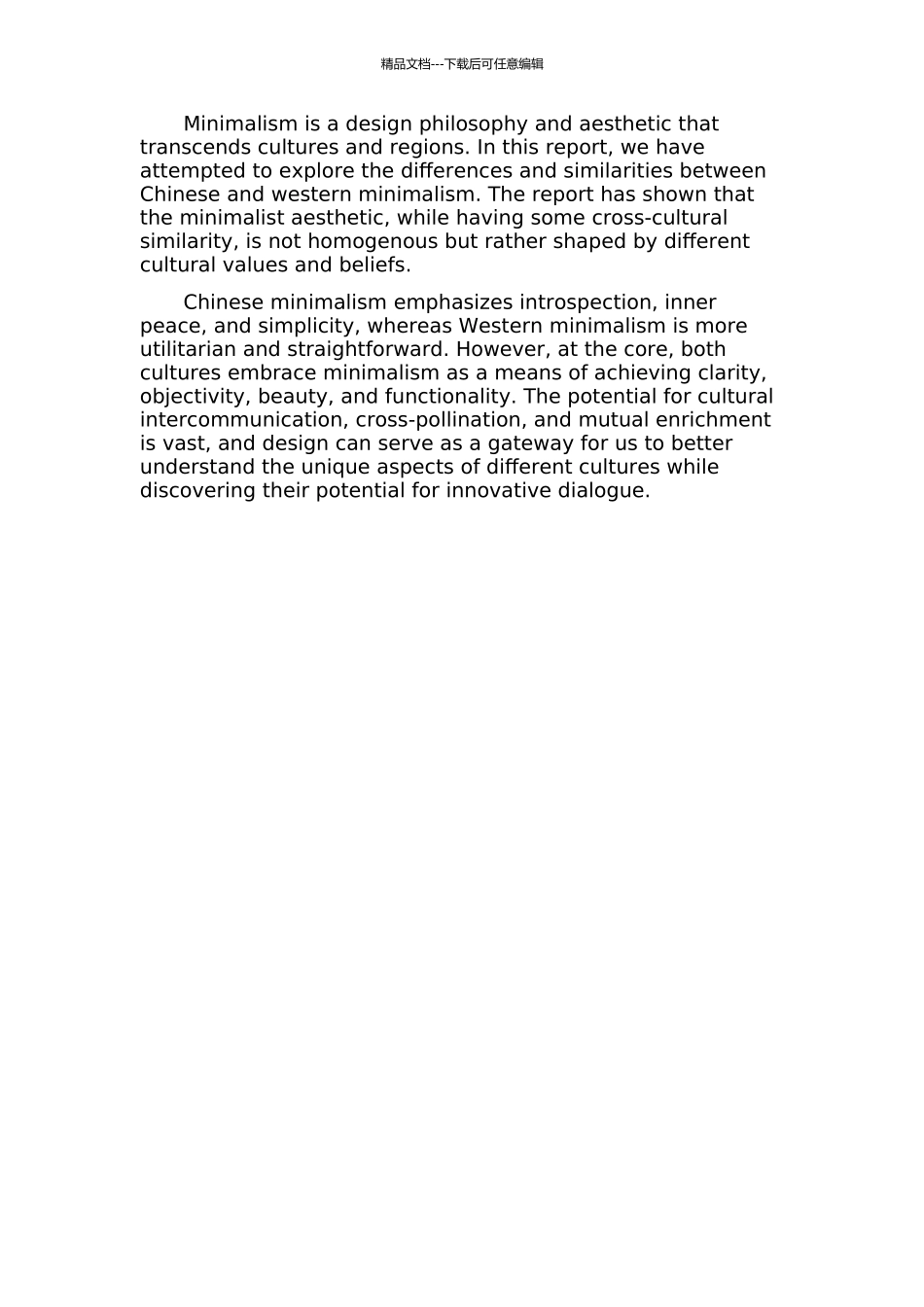精品文档---下载后可任意编辑东西方文化在简约设计理念上的异同的开题报告AbstractThe concept of minimalism, which emphasizes simplicity, functionality, and elegance, has been widely adopted in the design industry, attracting attention from both the east and the west cultures. In this report, we examine the similarities and differences between the minimalist design concepts in Chinese and Western cultures. We explore how these cultural backgrounds have nurtured unique perspectives on simplicity and minimalism, and how they are reflected in their art, architecture, and design. From the analysis, we aim to provide insights into these respective cultures and to contribute to a better understanding of the interdisciplinary realm of design.IntroductionDesign is a universal language that can communicate across cultures and regions, with visual aesthetics serving as a critical component of this communication. Minimalism is a contemporary design aesthetic that embraces simplicity, directness and starkness. It has been known to be adopted and applied in a variety of fields, ranging from art, architecture, web design, and user interface design. The minimalistic approach can be attributed to its ability to produce a sense of calm, sophistication, and elegance. While minimalism is relevant to virtually all cultures, the approach is embodied differently across cultures, primarily due to their unique cultural values, beliefs, and practices.In this report, we aim to explore the similarities and differences between the design and aesthetic cultures of the east and the west, in the context of minimalism. We aim to investigate how cultural experiences shape the meaning of simplicity, and how it affects the aesthetics and architecture of a regi...


